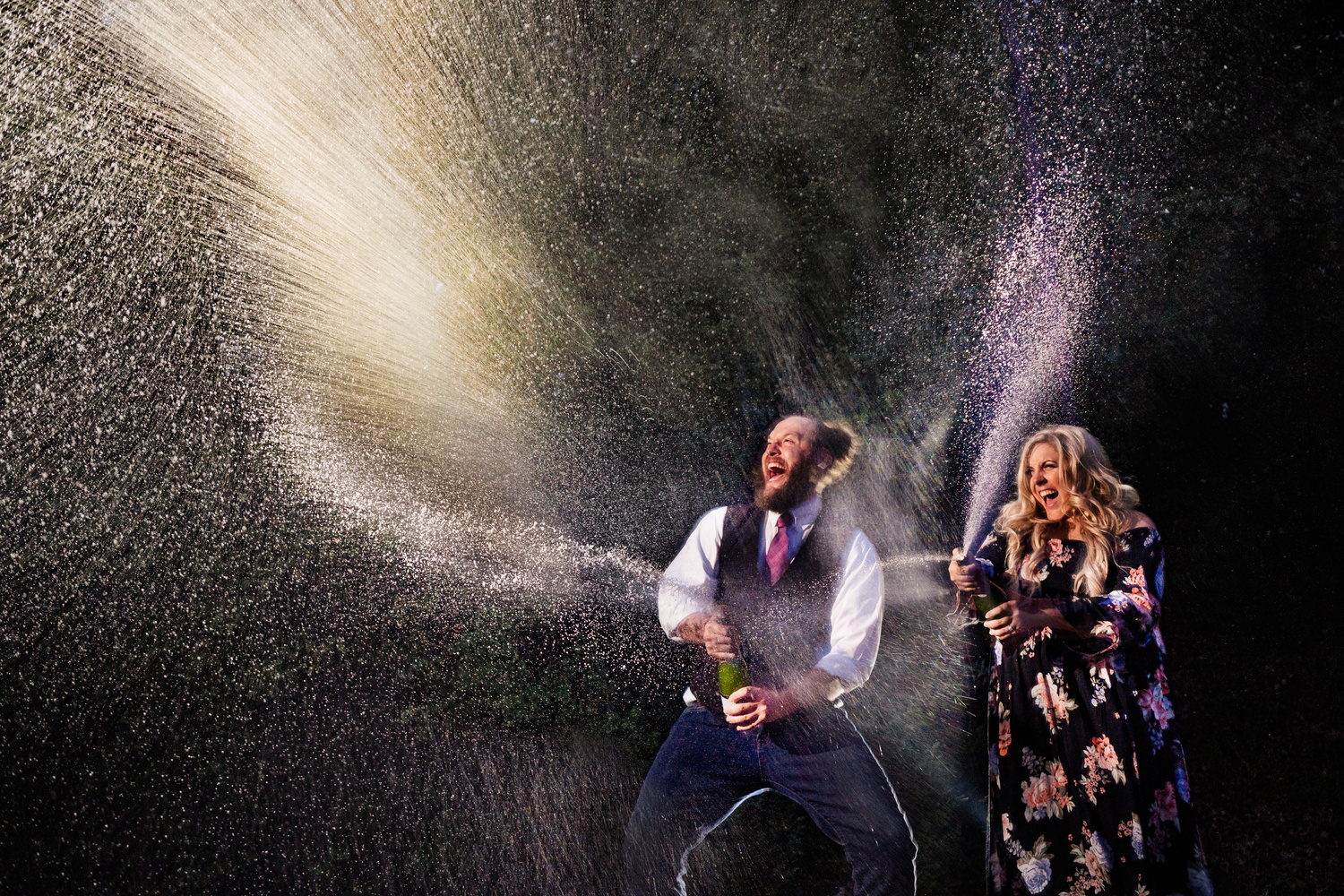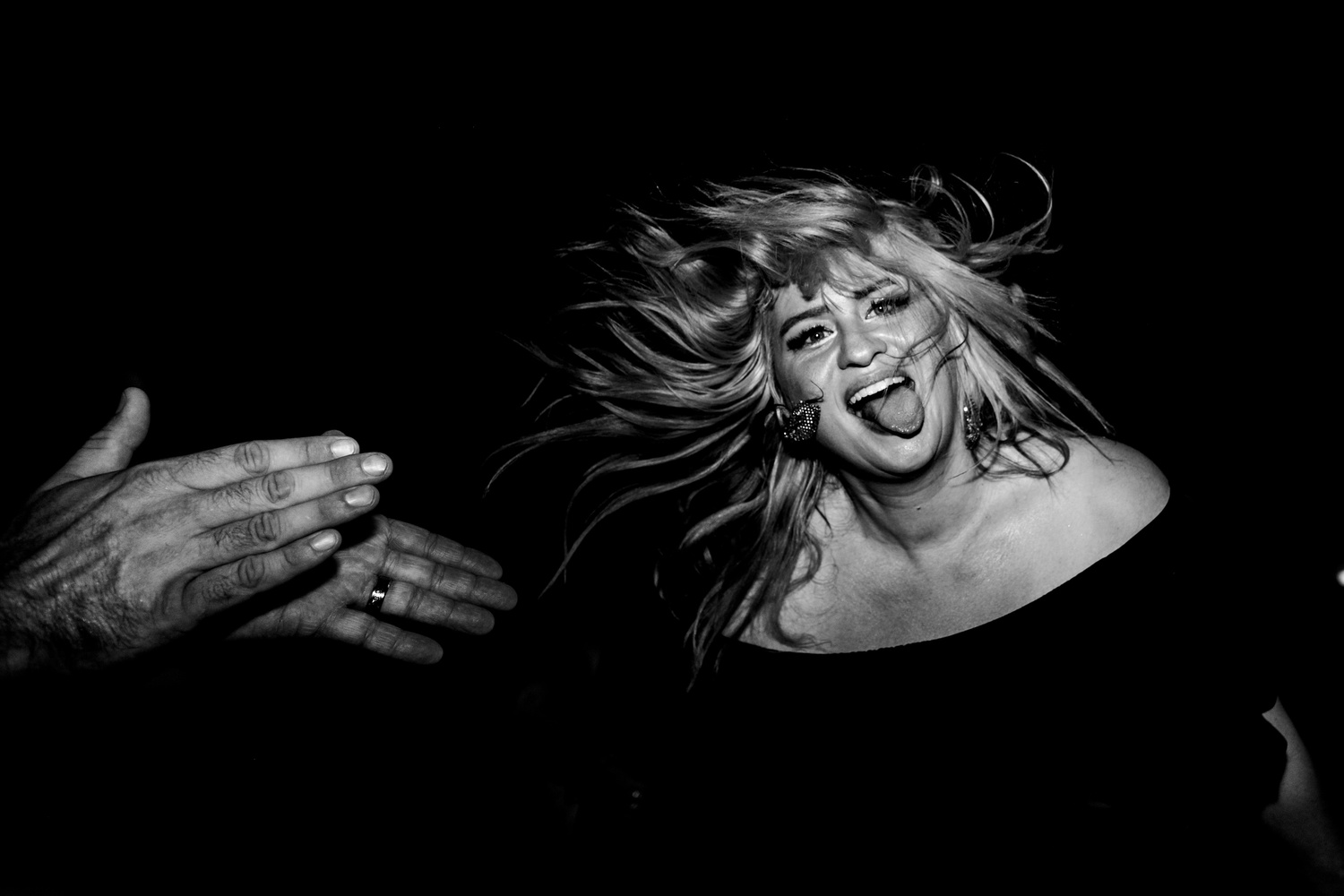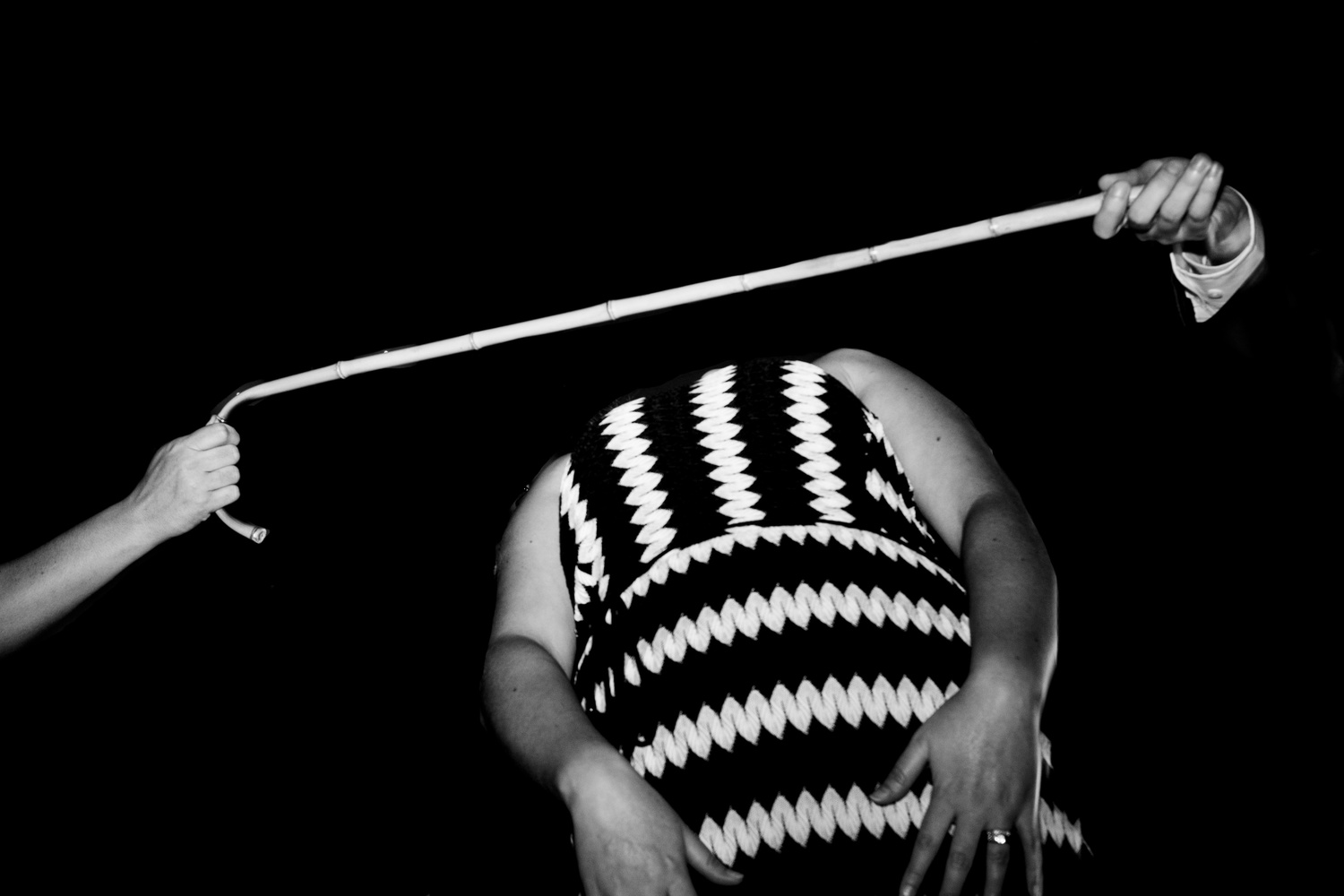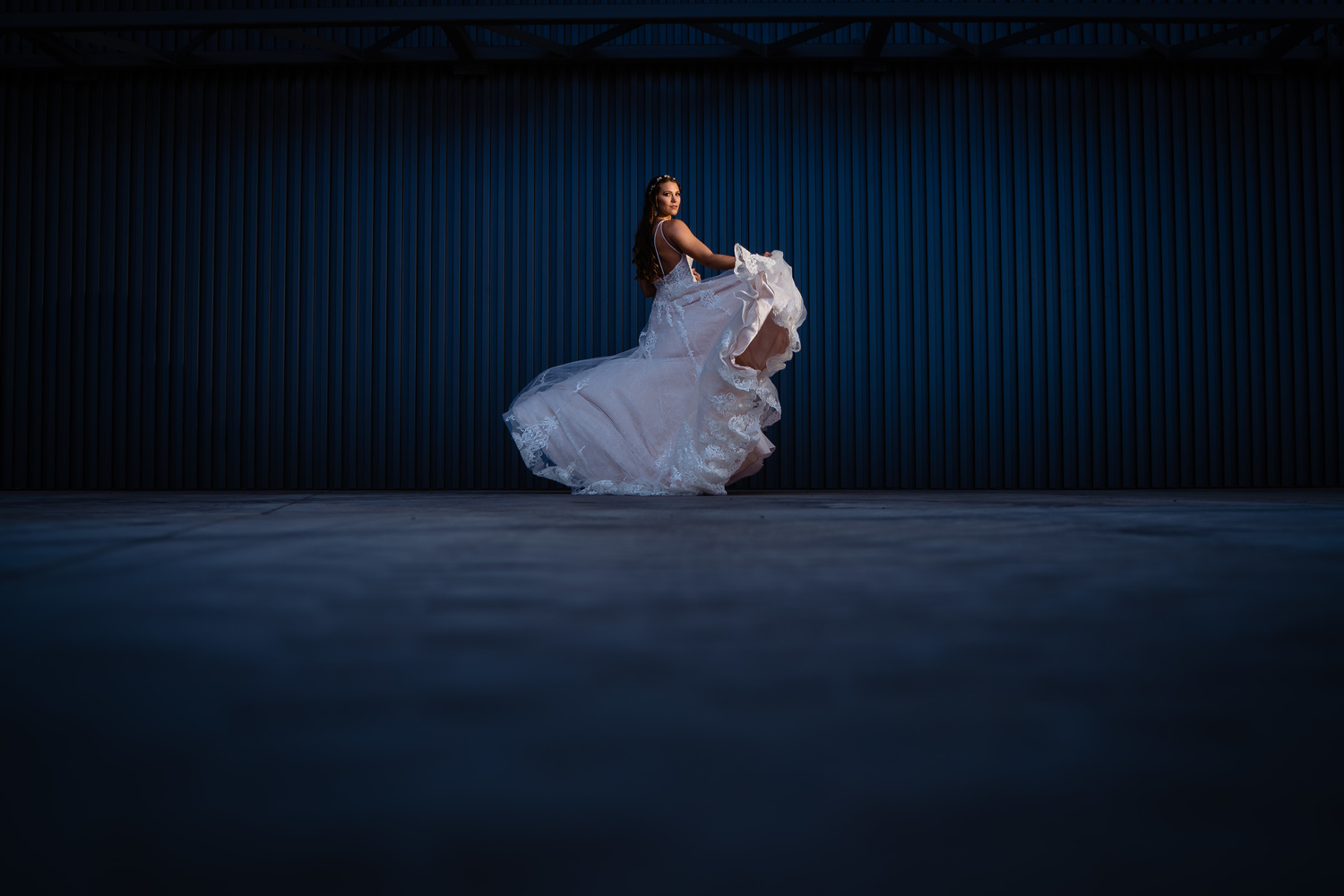When it comes to flash photography, there seems to be a constantly recurring question: manual or TTL flash? So at the end of the day, which one should you really be using?
Throughout Facebook groups and photography forums, you will see the same battle carried out over and over. Someone will ask if they should use manual or TTL flash when they are shooting. One user will come in and say “always shoot manual.” They will go on to explain that manual flash is the most consistent way to expose your image. When you use manual flash, you set your flash power and it will then use that same power for every exposure. But then, another user will chime in and say “TTL is the only way to go.” They will inform everyone that TTL is the fastest way to light an image. TTL uses a quick flash before the shutter is opened to know what the power of the flash should be and then automatically sets your flash to that power.

So who is right and who is wrong? Unfortunately, both are sort of right and both are sort of wrong. The real answer is, it depends on what you are shooting. Let me explain. Manual flash and TTL both have advantages and disadvantages depending on the situation. The key is to know when and where each one is at its greatest advantage.
Manual Flash
Because manual flash is basically set it and forget it, this setting works best when you know exactly where your light will be, where your subject will be, and what your camera settings will be. Once you have your camera and flash power set, you can feel free to shoot as you please. You can get close, move far, change lenses (as long as your aperture does not change), etc. Your flash will consistently fire at the power you set and your subject will remain the same exposure.

The drawback to using manual is that, in general, there is a bit of a guessing game to figure out what your flash power should be. You set everything up, take a test shot, adjust flash power, and repeat until your flash is dialed in. I say “in general” because, with practice, it’s possible to get pretty good at knowing what power you need given different situations. But even then, it can still require some fine-tuning pretty often.

Another drawback is when you are dealing with situations where the distance from your subject to flash is unknown or constantly varying. Depending on your setup, even a one or two-foot change can cause a drastic change in exposure. So if your subject is moving through a scene and your light is stationary, the amount of light on your subject will constantly vary.
TTL
Where manual flash struggles with a varying subject to flash distance, TTL shines. Because the flash emits a quick burst of light to measure what the light power should be set to, it knows when the subject has moved a bit closer or further from the light. This is especially useful for event photography. If you are using direct flash and don't know how far or close your subject will be, TTL will get you close or spot on to a perfect exposure. Same for if you are roaming around a venue bouncing the flash off a wall or ceiling. As you move closer or further from a wall, that will require you to raise or lower your flash power, which TTL will do automatically.

The drawback here is that TTL is not perfect. It will get you pretty close, but the metering system is similar to the metering system on your camera. Throw in a subject with bright clothing and the flash will compensate by making the flash power lower than it needs to be. Give it a dark subject and the power will be too high. Similarly, If you have the light off camera and the light is perfect on your subject, even a small change in composition can change the output of your light.
So What Is the Answer?
In the case of event photography with on-camera or bounce flash, close is all you need. The power output that TTL calculates will normally be better than what you can guess. Even if you can guess just as close as TTL gets you, both will still require a bit of fine-tuning in post-processing. So in my opinion, might as well let the flash do the guesswork to save you some mental capacity so that you can concentrate on the moment and composition. If you are doing event photography and you know the subject to flash distance will remain constant (same height ceiling to bounce off of for example), then you might as well shoot manual and remove all the guessing.

For portrait work, I think that manual flash is the way to go. You will normally be dealing with a posed and staged situation where you will know exactly where your subject will be and where your light will be. So save yourself from having to deal with small variations in the light output you could get from using TTL. Where TTL could work well for portraits is when your subject is moving through a scene and that flash to subject distance is constantly changing. Although, it’s possible to get around this with some good direction to your subject and using the inverse square law to your advantage.

Manual Plus TTL
There are some flashes where you can use TTL to get you close, then when you switch to manual, the flash will remember that power output. This minimizes some of the work by letting TTL take care of the initial guess. If the guess is good, then switching to manual just locks in that power for you. If the guess is a bit off, switching to manual still locks in that power and then you can simply fine-tune your settings from there. This is great when starting out with flash because you may not have any idea where to start. So simply let TTL get you close, switch to manual, and then take it the rest of the way from there.

Conclusion
TTL is not better than manual or vice versa. They are simply tools that get you the results you are looking for depending on the situation. So when someone asks if they should use TTL or manual flash, the answer isn’t so simple. It depends on the situation and how they are shooting. Although manual flash can work for any situation, TTL has the ability to save you a lot of time and headache when used correctly. So if you understand both and how they work, then you will know what to use and when.
Are you “team TTL” or “team manual”? Or are you like me and think they are just different tools for different situations?
If you're passionate about taking your photography to the next level but aren't sure where to dive in, check out the Well-Rounded Photographer tutorial where you can learn eight different genres of photography in one place. If you purchase it now, or any of our other tutorials, you can save a 15% by using "ARTICLE" at checkout.







"In the case of event photography with on-camera or bounce flash, close is all you need"...
Which is why even a mild working knowledge of the Manual output of your equipment is plenty effective. I can look at a scene and just know within a half stop where my strobe needs to be, because I am in similar settings very frequently. Its not to my benefit to put it into TTL, then have to change it back to manual, that just take time, more time than if i just left it in manual in the first place.
The Only real argument in Favor of TTL in my honest professional working life would be the very first image might be more usable, than say an accidental first Full power manual pop which would make the frame essentially useless. Aside from that you are just relying on a system to make changes for you that may or may not be accurate. If that is how you prefer to work thats great, I find it to be less accurate.
I dont use TTL because it doesn't help me in my shooting environments, im sure for in others it does.
"Even if you can guess just as close as TTL gets you, both will still require a bit of fine-tuning in post-processing. So in my opinion, might as well let the flash do the guesswork to save you some mental capacity so that you can concentrate on the moment and composition"
Why continually have to adjust your flash all night when TTL can get you just as close without needing to think about it? Also, depending on the situation, I'll frequently move back and forth from bounce flash to direct flash. So especially in that scenario, TTL will be much easier to deal with.
In my experience I have had TTL be 2-3 stops off, I dont know maybe I am doing something wrong so i give up and go back to Manual where I know that 3 feet back means bump up a full stop or whatever your are reading in the space. I have shot entire many outdoor dance floor weddings evenings on camera flash manual with my left hand on the flash (nikon manual flash) button adjusting the power level while moving from the scene. Ive tried TTL a bunch and just cant get it to work I gave up.
TTL is good for fast, transitional environments. If you are bouncing in the same room all night or have an off camera lighting setup, manual is the way to go. It's a hell of alot easier to batch images in post (can batch the exposure) vs having to go through and tweak exposure up and down 1/3rd of a stop for hundreds of images.
I addressed that in the article.
I'm not saying you didn't, but I feel like there is a fairly large time difference in post, especial if it is event work and you are delivering hundreds of images.
I agree with all you said but what about Auto mode? I use it any time I am out of the studio. You just set the flash and lens to the aperture you want to use and I find it is much less effected by a bright colored shirt or a dark scene like TTL is.
Exactly. I prefer to use auto at the highest power setting, with a diffuser. I also prefer auto flashes with dual flash tubes.
The author says: "The drawback to using manual is that, in general, there is a bit of a guessing game to figure out what your flash power should be. You set everything up, take a test shot, adjust flash power, and repeat until your flash is dialed in."
I say: " Sekonic has a fix for this". And, it allows for the precise repeatability of your favorite lighting ratios.
While I shoot TTL with on camera flash at events, I would advise anyone doing so to be vigilant about monitoring the exposures they are getting. Changes in the backgrounds that one may shoot against are going to change what the TTL system "thinks" is the correct exposure. Shooting tight? Clothing and skin tone can also cause the TTL system to expose inaccurately. But, for run and gun shooting at fast paced events, a photographer can't stop to hand meter every shot. So, warts and all TTL, as inconsistent as it's exposures are compared to using a hand held meter, gets pressed into use.
Mmm, I've learned something from that, thanks. I confess I only use TTL but I don't do much studio work. To get the flash right I just adjust the power output. Works for me.
Also being a tightarse I don't have wireless triggers and just use the infrared. And yeah that causes me problems when the flash unit is out of sight or in bright sun. It also means that adjusting the remote units involves walking over to change each one.
PS why don't camera makers put proper wireless triggers on their bodies? (or do they?). I only do occasional pro work and travel super light when I can on my bicycle.
"The drawback to using manual is that, in general, there is a bit of a guessing game to figure out what your flash power should be. You set everything up, take a test shot, adjust flash power, and repeat until your flash is dialed in."
Two words: Flash meter. Why guess and chimp when you don't have to?
Generally absolutes are not absolute. There can be a time and a place for either manual or TTL. Personally, I use manual (with a flash meter) when doing studio work, or outdoor portraiture using a flash.
When doing run and gun or event photography I tend to utilize bounce flash a lot. For me, TTL works far better than manual.
because I shoot location work 100 percent of the time and id rather chimp to dial in power then carry around another piece of gear. For studio work, absolutely. A light meter would be a great tool to use.
I kind of see your point, especially if you're doing a lot of dynamic shots. Though not 100 percent I, too, do a lot of location work in which I use OCF. For me, a flash meter is barely noticeable and saves a lot of time.
If I were able to chimp directly via the viewfinder (like with a mirrorless) I might rely on chimping more often. But with the back LCD, in daylight, attempting to chimp is a far larger PIA than having my little flash meter.
Ya, I have been mirrorless for 3 plus years. But even in my DSLR days, I have never needed or used a light meter. I'm almost always using a single light, so it just been easier for me to dial things in based off what I see.
For me, one of the advantages of using a flash meter is being able to walk through a scene, setting up lights (or measuring other sources) without having to go back to your camera location to take an exposure. If you know what ratios you want, you can get your exposures very close without snapping a frame. Of course for you, since you typically are only using one light, a flash meter may not be as efficient. But when you're dealing with multiple sources or getting back to camera location to check each light is a pain, a meter can be much quicker. Time is money! Love the article, by the way. I need to use TTL more for events.
Even when I use 2 lights, I can change everything I need from the trigger unless I need to physically move a light. I don't know, maybe if I tried one I'd like it?
Finally someone mentioned the flash meter.Simple as that you can meter each of your flashes. Even though my Profoto TTL works pretty well for a first shot if I need it.
Use TTL when warranted, use Manual when the situation requires it. Manual or automatic, they are both just tools to get you where you need to be. When shooting manual use a Flash Light Meter such as the Lumu Power 2 which can plug right into your iPhone so you don't have to guess and keep "dialing in" the light until you get it right.
The biggest drawback when shooting TTL in events is recycle time. Regardless which speedlight you are using, it takes much longer for the speedlight to recycle and you will miss shots. Shooting in manual will require you to do more post editing but you will be able to shoot rapidly.
I used to use SB-910 and now I am with Godox V860II and even with Li-Ion battery the recycle time is effected when on TTL.
Great point about recycle times! Definitely something to be aware of.
Lord how do you you guys shoot with TTL? Exposure be all over the place! Too many factors can throw it off to me. I've tried in all metering modes and never had a consistent run. Just too much editing to do after for me to use. I've asked many pros and they feel the same. If someone can give me some suggestions on improving TTL I'm all ears! I have a Cannon 5D Mark IV and the EOS R using the previous mothership speedlight (I forget the model name) the one before that auto tilt version came out.
Thanks for the helpful article. I was wondering if there is an auto setting or flash system which can adjust its output based on distance alone.
I run into some problems using ttl in a wedding reception with on camera flash, where the flash (undesirably) compensates for light or dark colored clothing. This is also a problem when the bridesmaids are walking down the isle and the flash meters for the lightness of their clothing and then the bride, dressed in white, risks underexposure. (although, often the dad walking with her us usually dressed in black compensates for this)
Is there a flash that can use the center focus point information (or IR or some type of distance meter) to automatically tell the flash to compensate based on distance only? In these scenarios, distance is my only variable for a proper exposure.